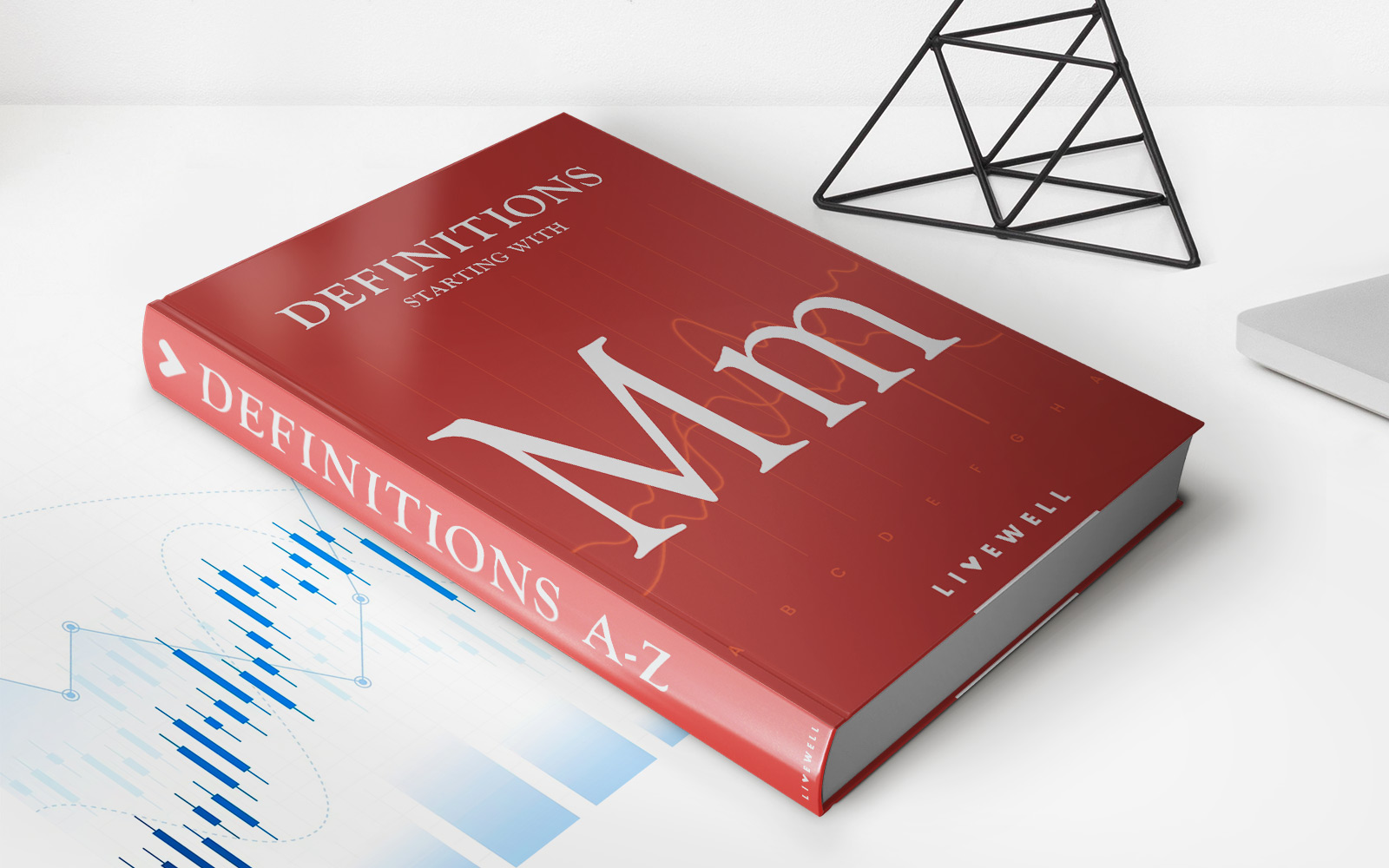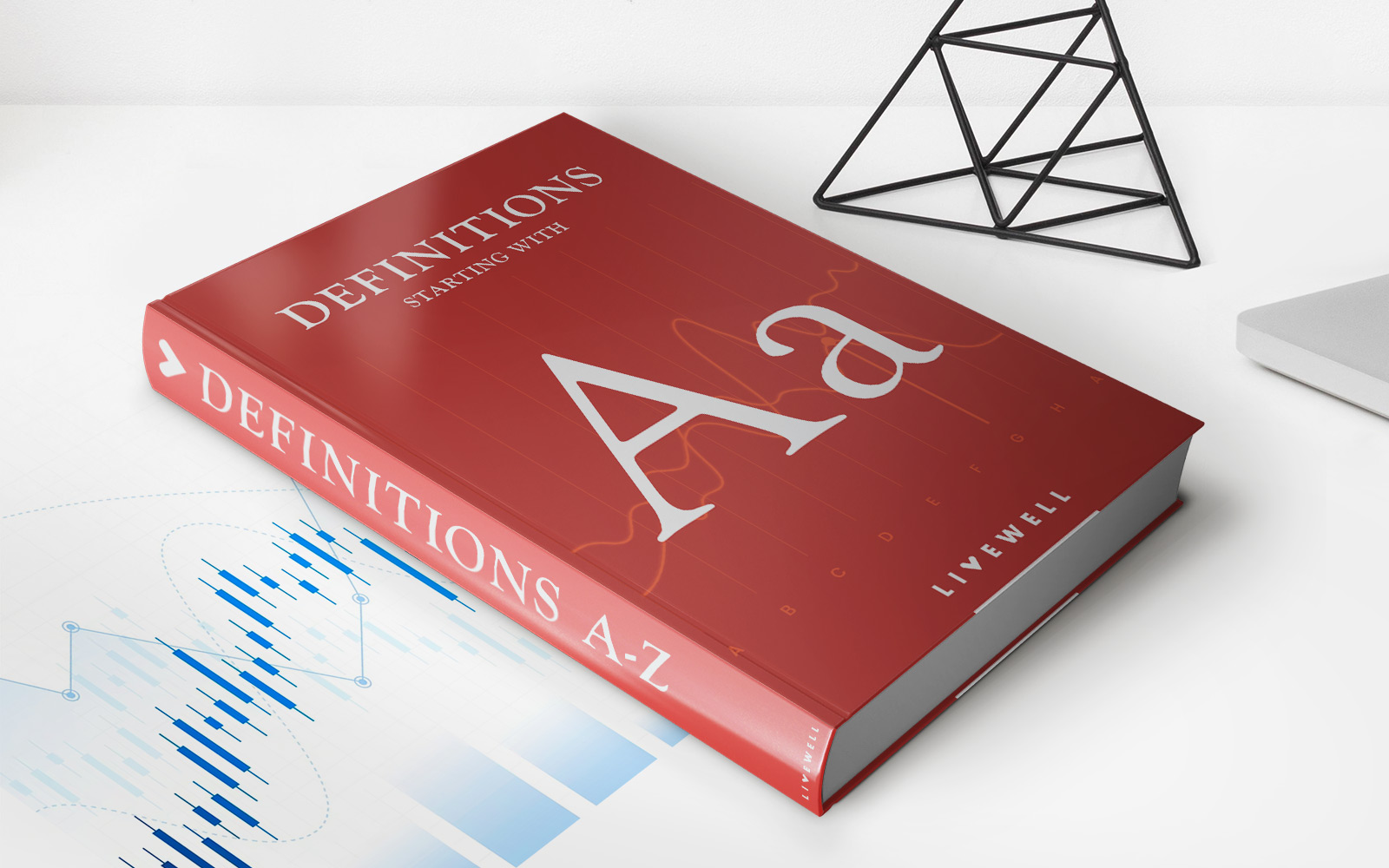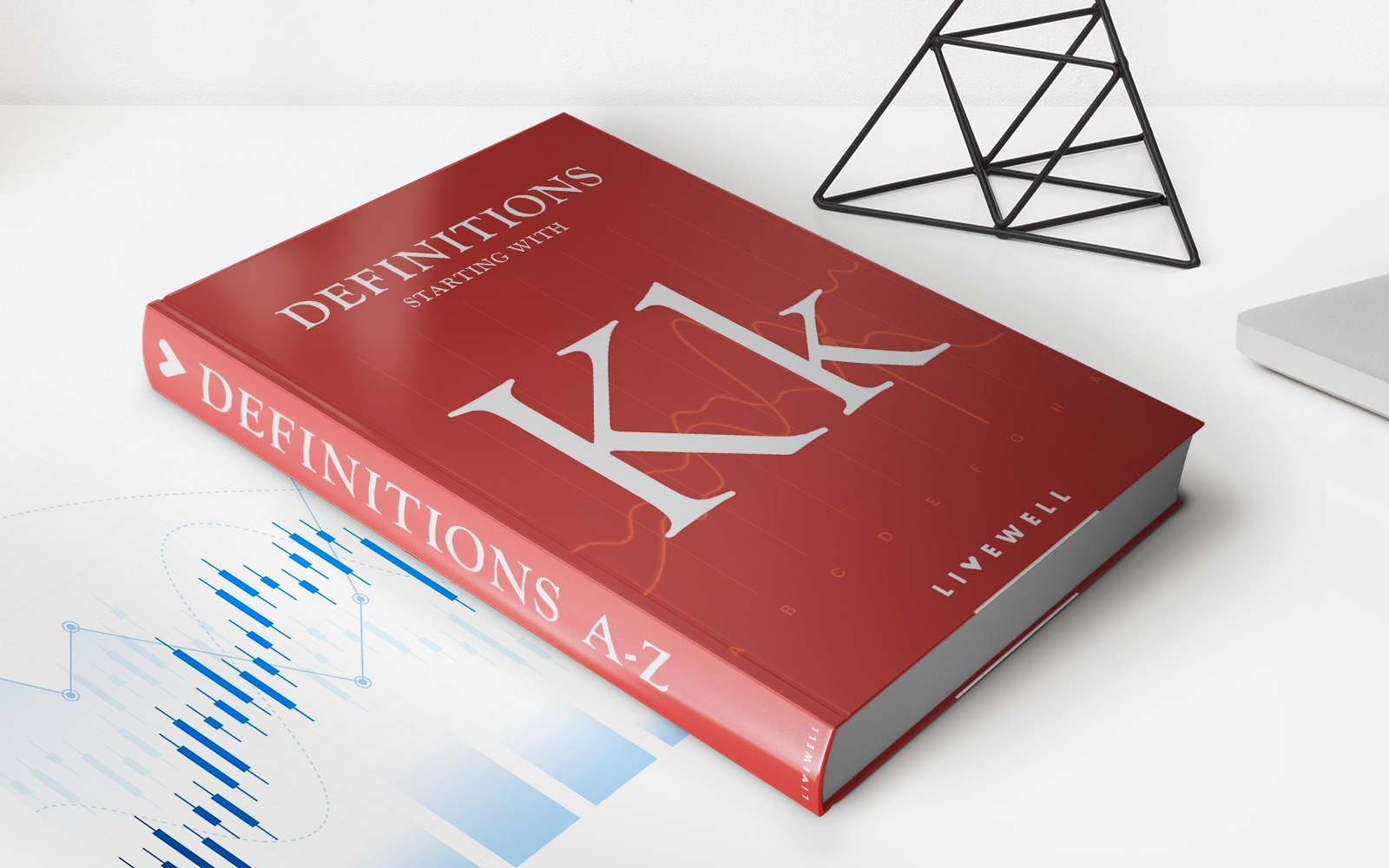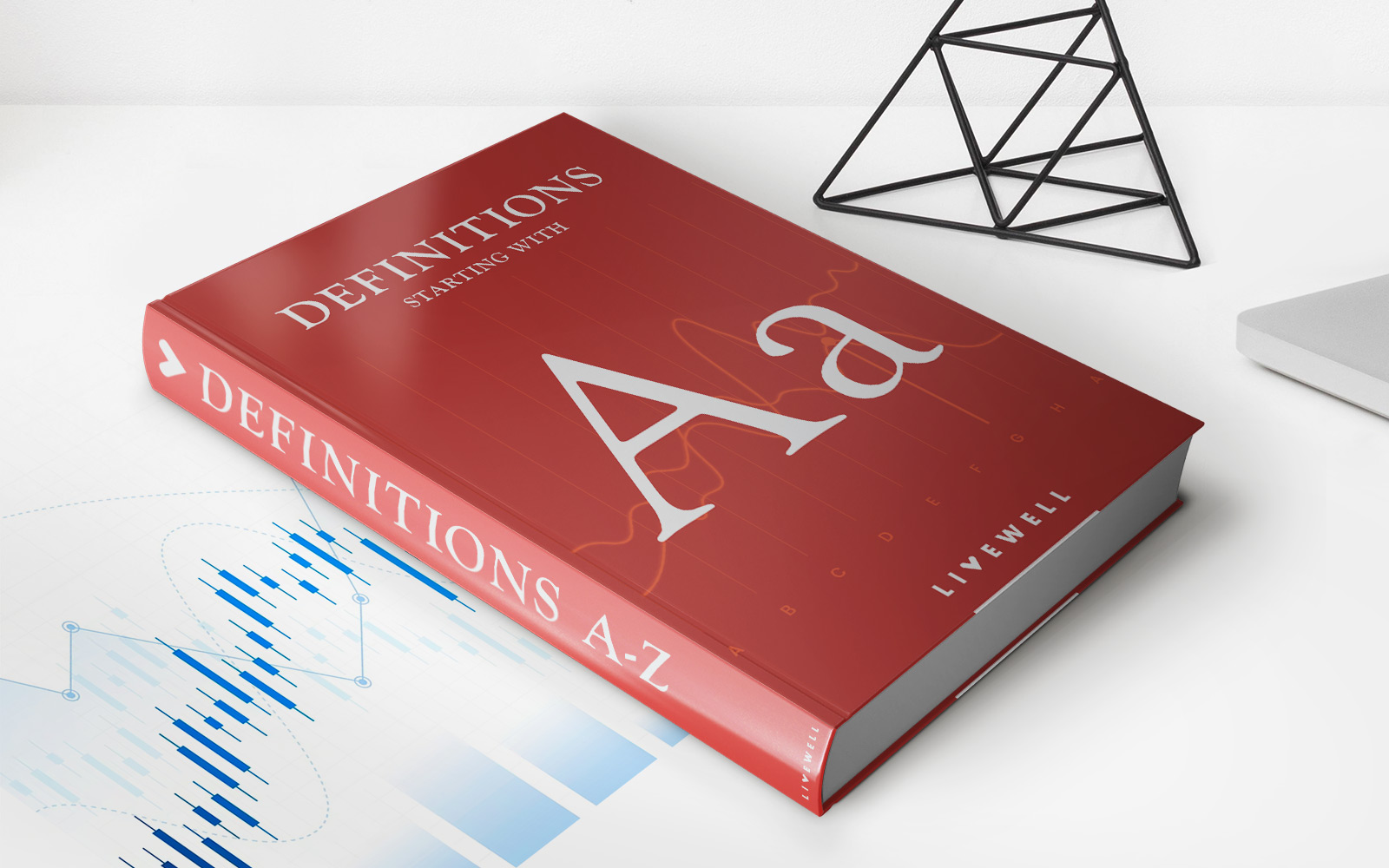Home>Finance>How Does Capital Structure Affect The Price Of A Firm’s Stock?


Finance
How Does Capital Structure Affect The Price Of A Firm’s Stock?
Modified: December 30, 2023
Discover how the finance concept of capital structure directly impacts a firm's stock price and learn why it's crucial for investors to understand its influence.
(Many of the links in this article redirect to a specific reviewed product. Your purchase of these products through affiliate links helps to generate commission for LiveWell, at no extra cost. Learn more)
Table of Contents
- Introduction
- Understanding Capital Structure
- Factors Affecting Capital Structure
- Impact of Capital Structure on Firm’s Stock Price
- Theories and Models Explaining the Relationship
- Empirical Evidence on Capital Structure and Stock Price
- Case Studies and Examples
- Criticisms and Limitations of Capital Structure Analysis
- Implications for Investors and Decision-makers
- Conclusion
Introduction
When it comes to understanding the complexities of the financial world, the concept of capital structure plays a crucial role. Capital structure refers to the way a firm finances its operations by utilizing various sources of funds, including equity and debt.
One of the key considerations for any investor or business decision-maker is the impact of capital structure on a firm’s stock price. It is widely recognized that the capital structure of a company can influence its overall value and, consequently, the price of its stock in the market.
In this article, we will explore the relationship between capital structure and the price of a firm’s stock. We will delve into the factors that can affect a company’s capital structure, examine theories and models that explain this relationship, and analyze empirical evidence to support these findings.
By understanding the dynamics of capital structure and its impact on stock price, investors and decision-makers will be better equipped to make informed choices and optimize their investment strategies.
So, let’s dive into the world of capital structure and uncover the fascinating connection it holds with the price of a firm’s stock.
Understanding Capital Structure
Capital structure refers to the composition of a company’s financial resources, including the proportion of equity and debt used to finance its activities. It reflects the way a company manages its long-term funding sources.
Equity financing involves raising capital by selling ownership stakes in the company, typically in the form of common or preferred stock. Debt financing, on the other hand, involves borrowing money from external sources, such as banks or issuing bonds.
The decision on the optimal capital structure depends on various factors, including the company’s industry, business model, risk profile, and financial goals.
A company with a higher proportion of equity in its capital structure is considered to have a conservative approach as it relies more on internal financing and has a lower financial risk. On the other hand, a company with a higher proportion of debt is deemed to have a more aggressive approach as it uses external funds to finance its operations, potentially increasing its financial risk.
It’s important to note that capital structure is not a one-size-fits-all strategy. Each company must strike a balance between equity and debt that aligns with its specific circumstances and objectives.
Moreover, capital structure decisions have long-term implications for a company, as they can impact its ability to raise funds, make investments, and sustain profitability. For investors, understanding a company’s capital structure can provide insights into its financial health and risk profile.
Now that we have a clear understanding of capital structure, let’s explore the various factors that can influence this crucial aspect of a company’s financing strategy.
Factors Affecting Capital Structure
Determining the optimal capital structure for a company is a complex process that involves considering numerous factors. These factors can vary depending on the industry, size of the company, growth prospects, profitability, and risk appetite. Here are some key factors that can affect a company’s capital structure:
- Business Risk: The level of risk associated with a company’s operations can influence its capital structure decisions. Higher business risk may make it challenging to obtain debt financing, leading to a higher proportion of equity in the capital structure.
- Industry Norms: The capital structure choices of a company are often influenced by the prevailing practices within its industry. For example, some industries may have higher levels of debt financing due to their stable cash flows, while others may rely more on equity financing due to higher risk profiles.
- Tax Considerations: The tax environment can play a significant role in shaping capital structure decisions. Interest payments on debt are tax-deductible, which can make debt financing more attractive from a tax standpoint. Conversely, issuing new equity shares does not offer the same tax advantages.
- Profitability and Cash Flow: Companies with strong profitability and consistent cash flows may have an easier time accessing debt financing. Lenders are more likely to lend to companies with a reliable repayment capability, resulting in a higher proportion of debt in the capital structure.
- Flexibility and Financial Goals: Companies with fluctuating cash flows or those that anticipate future investment opportunities may prefer a more flexible capital structure. By maintaining a balance between equity and debt, they can have the flexibility to raise funds as needed without being overly burdened by interest payments.
- Market Conditions: The prevailing economic conditions and market sentiment can influence capital structure decisions. During periods of low interest rates, companies may be more inclined to take on debt as borrowing costs are lower. Alternatively, during economic downturns or market uncertainties, companies may opt for a more conservative capital structure strategy.
It’s important to note that these factors are not exhaustive, and every company’s capital structure decisions are unique. The interplay of these factors requires careful analysis and consideration to determine the optimal mix of equity and debt for a company’s capital structure.
Now that we have explored the factors influencing capital structure, let’s delve into the impact of capital structure on a firm’s stock price.
Impact of Capital Structure on Firm’s Stock Price
The capital structure of a company can have a significant impact on its stock price. Investors and analysts closely monitor a firm’s capital structure as it provides insights into the financial risk and potential returns associated with investing in the company.
Here are some ways in which capital structure can influence a firm’s stock price:
- Cost of Capital: The cost of capital is the required return that a company needs to provide to its investors in order to compensate for the risk undertaken. The capital structure can influence the cost of capital, as the mix of equity and debt affects the overall interest and dividend payments made by the company. A higher cost of capital may lead to a decline in the stock price, as investors demand a higher return to compensate for the perceived risk.
- Financial Risk: The capital structure determines the financial risk faced by a company. A higher proportion of debt in the capital structure increases the financial risk, as the company must make regular interest payments and repay the principal amount at maturity. If the company faces challenges in meeting its obligations, it can raise concerns among investors and result in a decrease in stock price.
- Profitability and Growth potential: The capital structure can influence a company’s ability to generate profits and fund growth initiatives. Debt financing can provide a tax advantage and lower cost of capital, allowing companies to invest in expansion opportunities and potentially enhance profitability. Investors may perceive a company with a growth-oriented capital structure positively, leading to an increase in stock price.
- Market Perception and Investor Confidence: Investors often analyze a company’s capital structure as an indicator of its financial health and stability. A well-balanced and efficient capital structure can build investor confidence and attract more investments, resulting in an increase in stock price. Conversely, a highly leveraged or unstable capital structure can erode investor confidence and lead to a decline in stock price.
- Dividend Policy: The capital structure can influence a company’s ability to pay dividends to its shareholders. A higher proportion of debt may require the company to allocate a significant portion of its earnings towards interest payments, limiting the funds available for dividend payments. This can impact investor perceptions and potentially lead to a decrease in stock price.
It is essential to note that the impact of capital structure on stock price is not linear and can vary depending on the specific circumstances of the company and the overall market conditions.
Next, we will explore the theories and models that provide insights into the relationship between capital structure and stock price.
Theories and Models Explaining the Relationship
The relationship between capital structure and a firm’s stock price has been the subject of numerous theories and models developed by experts in the field of finance. These theories aim to explain the dynamics and factors influencing this relationship. Let’s explore some of the key theories and models:
- Modigliani-Miller theorem (M&M): Developed by Franco Modigliani and Merton Miller in the 1950s, this theory states that, under certain assumptions, the capital structure of a firm does not affect its value or stock price. According to M&M, in a world with perfect markets, the value of a company is determined by its cash flows and the riskiness of its underlying assets, regardless of how the company is financed.
- Trade-off theory: The trade-off theory proposes that companies face a trade-off between the benefits and costs associated with different capital structures. The benefits of debt financing include interest tax shields and lower cost of capital, while the costs include financial distress and agency costs. The optimal capital structure strikes a balance between these benefits and costs to maximize firm value and ultimately affect the stock price.
- Pecking order theory: The pecking order theory, introduced by Stewart Myers, suggests that companies prioritize their sources of financing based on the internal hierarchy of funding. Companies prefer internal financing (retained earnings) first, followed by debt, and finally equity. This theory implies that a firm’s stock price can be influenced by its capital structure choices as it signals the availability and appropriateness of different financing options.
- Market timing theory: The market timing theory asserts that companies consider the prevailing market conditions and investor sentiment when making capital structure decisions. According to this theory, companies may issue equity or debt based on perceived market conditions with the goal of maximizing the stock price. For example, if a company believes that its stock is overvalued, it may issue new shares to take advantage of the high market price.
- Agency theory: The agency theory focuses on the conflicts of interest between different stakeholders in a company, such as shareholders and management. A company’s capital structure can influence the alignment of interests and agency costs. For example, excessive debt financing may create conflicts between shareholders and bondholders, potentially impacting the stock price.
These theories and models provide a framework for understanding the complex relationship between capital structure and stock price. However, it is important to note that real-world scenarios often involve additional complexities and factors that can influence the relationship between capital structure decisions and a firm’s stock price.
Next, we will examine empirical evidence to support these theories and shed light on the practical implications of capital structure on stock price.
Empirical Evidence on Capital Structure and Stock Price
Over the years, researchers and analysts have conducted numerous studies to examine the relationship between capital structure and a firm’s stock price. These empirical studies provide valuable insights into the real-world implications of capital structure decisions. Let’s explore some key findings from the empirical evidence:
One common finding across studies is that there is no universally optimal capital structure that applies to all companies. The optimal capital structure varies across industries, company size, and other contextual factors. However, several general trends have emerged:
- Positive relationship with profitability: Studies indicate a positive relationship between profitability and a firm’s stock price. Companies with higher profitability tend to have higher stock prices, which can influence their ability to take on more debt and maintain a higher proportion of debt in their capital structure.
- U-shaped relationship: Some studies suggest a U-shaped relationship between capital structure and stock price. According to this finding, there is an optimal point where the stock price is maximized, with deviations on either side potentially leading to a decline in the stock price. It indicates that both excessive debt and excessive equity in the capital structure can pose risks to firm value.
- Pecking order theory validation: Empirical evidence supports the pecking order theory, indicating that firms prioritize internal financing over external sources, such as debt or equity. This preference for internal financing is consistent with the observed negative relationship between leverage (debt) and stock price.
- Market timing effect: Some studies suggest that firms consider market timing when making capital structure decisions. Companies may issue equity when their stock is overvalued to take advantage of high market prices, which can dilute the stock and potentially lead to a decline in stock price in the short term.
It is important to note that empirical studies may yield different findings due to variations in methodologies, sample sizes, and data sources. Additionally, the impact of capital structure on stock price can be influenced by various external factors, such as macroeconomic conditions and industry-specific dynamics.
While empirical evidence provides valuable insights, it is crucial to analyze specific company characteristics and market conditions to make meaningful interpretations and apply the findings to investment decisions.
Now, let’s explore some case studies and examples that illustrate the practical implications of capital structure on stock price.
Case Studies and Examples
Several case studies and real-world examples provide concrete illustrations of the impact of capital structure on a firm’s stock price. Let’s examine a couple of notable cases:
Apple Inc.
Apple Inc., the technology giant, provides an interesting case study of the influence of capital structure on stock price. Historically, Apple has maintained a conservative capital structure with a significant proportion of cash reserves and minimal debt. This approach helped build investor confidence and contributed to a rise in Apple’s stock price over the years. Investors viewed Apple’s strong cash position as a sign of financial stability, and this optimism translated into a higher stock valuation.
Tesla Inc.
Tesla Inc., the electric vehicle manufacturer, presents a contrasting case study. Tesla has pursued an aggressive capital structure strategy, relying heavily on external financing to fuel its growth and research and development efforts. This has resulted in a higher proportion of debt in its capital structure. While this approach has generated controversy and skepticism, Tesla’s stock price has experienced significant volatility. The perceived risk associated with the high debt levels has impacted market sentiment and resulted in fluctuating stock prices.
These case studies highlight that the relationship between capital structure and stock price is complex and context-dependent. Factors such as industry dynamics, company performance, and investor sentiment all play a role in shaping the market’s perception of a firm’s capital structure decisions and, consequently, its stock price.
It is important to note that these examples are not indicative of a one-size-fits-all approach, and every company’s capital structure decisions should be tailored to its specific circumstances and goals. Conducting thorough analysis and considering the broader market environment is vital for better understanding the potential impact on stock price.
Now, let’s explore some of the criticisms and limitations associated with capital structure analysis.
Criticisms and Limitations of Capital Structure Analysis
While capital structure analysis provides insight into the relationship between a firm’s financing decisions and its stock price, it is essential to acknowledge some criticisms and limitations associated with this analysis. Understanding these limitations helps maintain a balanced perspective. Here are a few key criticisms:
- Simplistic assumptions: Many capital structure theories and models are built on simplified assumptions that may not fully capture the complexities of real-world scenarios. For example, assumptions of perfect markets or homogenous investor preferences may not align with the dynamic nature of financial markets.
- Market inefficiencies: Capital structure analysis often assumes efficient markets, where all relevant information is reflected in the stock price. However, real-world markets may exhibit inefficiencies, such as information asymmetry or behavioral biases, which can affect the interpretation of capital structure and its impact on stock price.
- Neglecting qualitative factors: Capital structure analysis primarily focuses on quantitative factors such as leverage ratios, profitability, and cash flow. While these metrics provide valuable insights, they may overlook important qualitative considerations such as company reputation, brand value, or management capabilities that can also influence stock price.
- Endogeneity issues: There can be endogeneity issues in analyzing the relationship between capital structure and stock price. Factors such as stock price volatility or company performance may influence capital structure decisions, making it challenging to establish causality between the two variables.
- Changing market dynamics: Market conditions and investor preferences can be dynamic, with shifts in interest rates, regulatory changes, or macroeconomic factors. These changes can have an impact on the relationship between capital structure and stock price, making it challenging to rely solely on historical analysis.
It is important to consider these criticisms and limitations when interpreting capital structure analysis. While capital structure provides valuable insights, it should not be the sole determinant of investment decisions. A comprehensive analysis should incorporate a broader understanding of company fundamentals, market dynamics, and qualitative factors.
With an understanding of the limitations, let’s explore the implications of capital structure analysis for investors and decision-makers.
Implications for Investors and Decision-makers
Capital structure analysis has several implications for both investors and decision-makers in a company. Understanding the relationship between capital structure and stock price can help inform investment strategies and managerial decision-making. Here are some key implications:
- Investment decisions: For investors, capital structure analysis provides insights into a company’s financial risk and potential returns. By examining a company’s capital structure, investors can assess the level of risk associated with the investment and make informed decisions based on their risk appetite and investment objectives.
- Risk management: Companies can use capital structure analysis to assess their financial risk and manage it effectively. By understanding the impact of debt levels on stock price and the potential risks associated with high leverage, decision-makers can make prudent financing choices to mitigate financial risks and maintain stability.
- Access to capital: Capital structure analysis helps companies evaluate their ability to raise funds from different sources. It provides insights into the trade-offs between equity and debt financing and helps decision-makers identify the optimal mix that minimizes cost of capital and maximizes firm value.
- Stakeholder communication: A company’s capital structure decisions can shape its image and perceived financial health. Transparent communication with stakeholders about capital structure choices and rationale can foster trust and confidence in the company’s financial management, which may positively impact stock price.
- Long-term planning: Capital structure analysis encourages decision-makers to consider the long-term implications of their financing choices. It highlights the need to balance short-term financial objectives with the company’s long-term growth potential and sustainability, ensuring that the chosen capital structure supports the strategic goals of the organization.
- Flexibility and adaptability: By examining the impact of capital structure on stock price, decision-makers can anticipate the potential market reactions and adjust their financing strategies accordingly. This allows companies to be more agile and responsive to changes in market conditions and investor sentiment.
These implications emphasize the importance of capital structure analysis in guiding investment decisions and strategic financial management. By understanding the dynamics of capital structure and its implications, investors and decision-makers can navigate the complexities of financial markets more effectively.
Now, let’s conclude our exploration of capital structure and its impact on stock price.
Conclusion
The relationship between capital structure and the price of a firm’s stock is a dynamic and complex subject within the realm of finance. Capital structure plays a vital role in determining a company’s risk profile, cost of capital, and financial stability, all of which can influence its stock price. Through the analysis of factors such as business risk, industry norms, tax considerations, profitability, and market conditions, decision-makers can determine the optimal mix of equity and debt in their capital structure.
Theories and models, such as Modigliani-Miller, trade-off theory, pecking order theory, market timing theory, and agency theory, provide frameworks for understanding the relationship between capital structure and stock price. Empirical evidence has revealed insights into the dynamic and context-dependent nature of this relationship, with factors such as profitability, financial risk, market perception, and dividend policy all impacting stock price.
While capital structure analysis provides valuable insights, it is not without limitations. Simplistic assumptions, market inefficiencies, endogeneity issues, and changing market dynamics can complicate the interpretation and application of capital structure analysis. It is essential to combine this analysis with broader considerations of company fundamentals, qualitative factors, and market dynamics to make well-informed investment decisions and strategic financial management choices.
For investors, capital structure analysis provides insights into a company’s financial risk and potential returns. It aids in evaluating investment opportunities, assessing risk tolerance, and understanding the drivers of stock price movements. Decision-makers can utilize capital structure analysis to manage financial risk, access capital, communicate with stakeholders, plan for the long term, and adapt to changing market conditions.
Ultimately, capital structure decisions should align with a company’s strategic goals, financial health, and risk appetite. By comprehensively understanding the relationship between capital structure and stock price, investors and decision-makers can navigate the complex financial landscape and enhance their chances of achieving long-term success.














